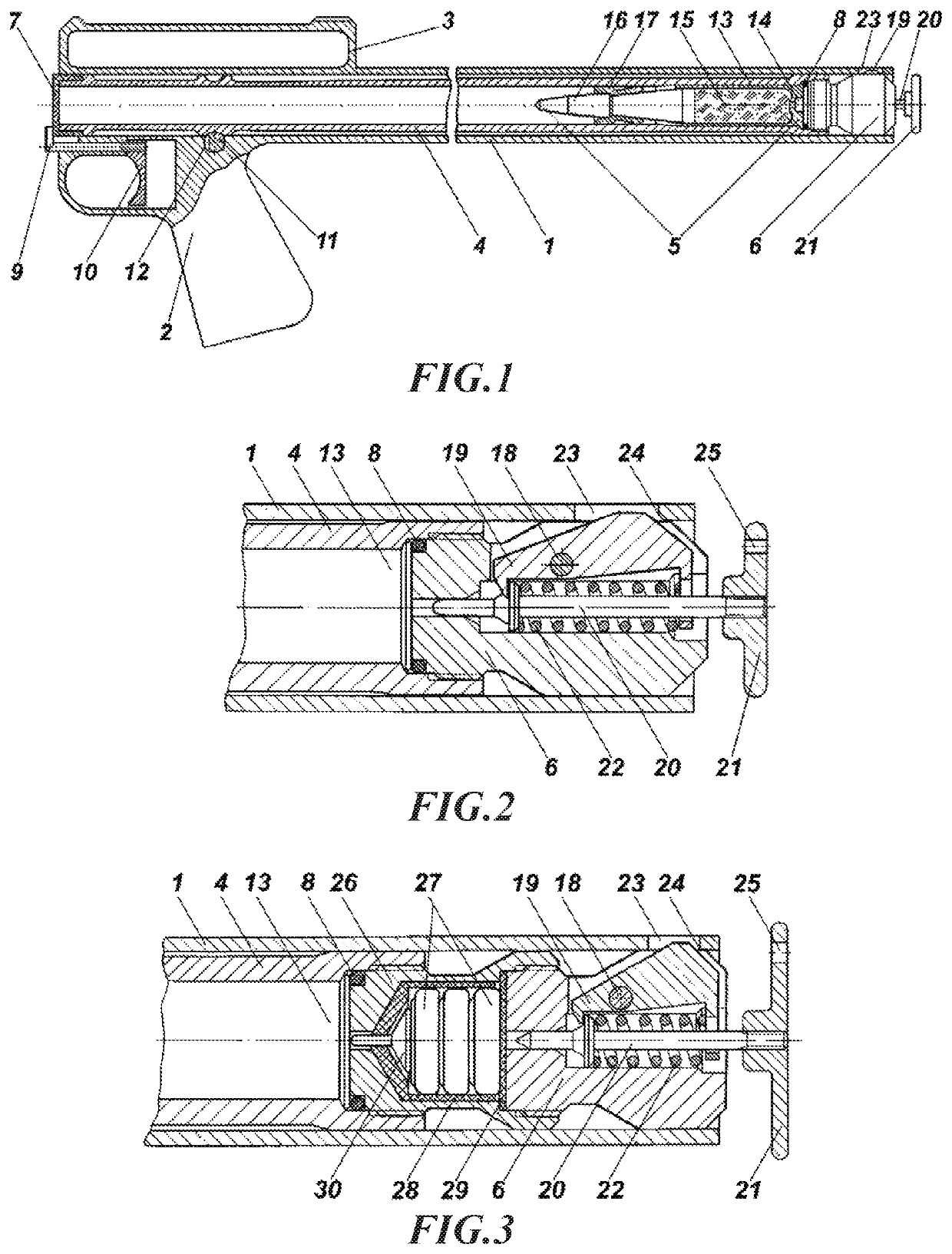Recoilless underwater firearm
a firearm and recoil technology, applied in the field of recoil firearms, can solve the problems of reducing the recoil momentum only by 20-30%, reducing the power of ammunition, and turning the swimmer around, so as to increase the efficiency and safety of shooting
- Summary
- Abstract
- Description
- Claims
- Application Information
AI Technical Summary
Benefits of technology
Problems solved by technology
Method used
Image
Examples
Embodiment Construction
[0043]FIG. 1 shows the longitudinal cross-section of a recoilless underwater hunting firearm of the 12th gauge before a shot. The firearm includes: a gun carriage 1 executed in the form of an open on both sides tube with a pistol grip 2 and a carrying handle 3, which comprises a front sight and a rear sight, a barrel 4 with an ammunition 5, which is closed by a screwing breechblock 6 with a firing mechanism, a sealing plastic cap 7 and a sealing rubber ring 8, which prevents water penetrating into the barrel until a shot.
[0044]Fire control tool has a manual drive providing movement of the barrel 4 in the gun carriage 1 for carrying out the shot and contains a trigger bar 9, which is connected with a trigger 10 and with the edge of the muzzle face of the barrel 4, which is closed by a plastic sealing cap 7. The barrel 4 is kept from moving in the gun carriage 1 by a safety-lock 11 with a segmented slot 12, which can be turned around its longitudinal axis by means of an external lever...
PUM
 Login to View More
Login to View More Abstract
Description
Claims
Application Information
 Login to View More
Login to View More - R&D
- Intellectual Property
- Life Sciences
- Materials
- Tech Scout
- Unparalleled Data Quality
- Higher Quality Content
- 60% Fewer Hallucinations
Browse by: Latest US Patents, China's latest patents, Technical Efficacy Thesaurus, Application Domain, Technology Topic, Popular Technical Reports.
© 2025 PatSnap. All rights reserved.Legal|Privacy policy|Modern Slavery Act Transparency Statement|Sitemap|About US| Contact US: help@patsnap.com


